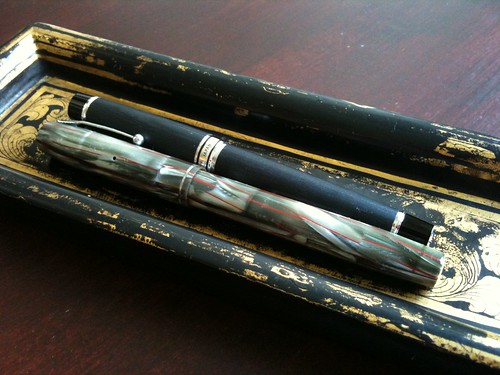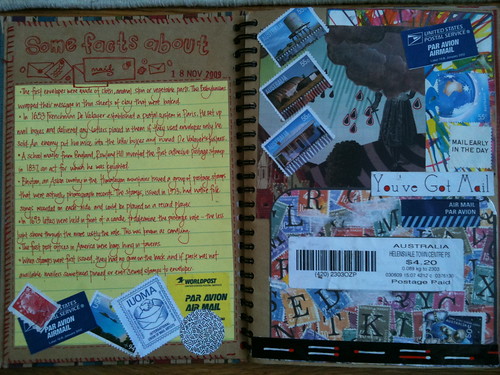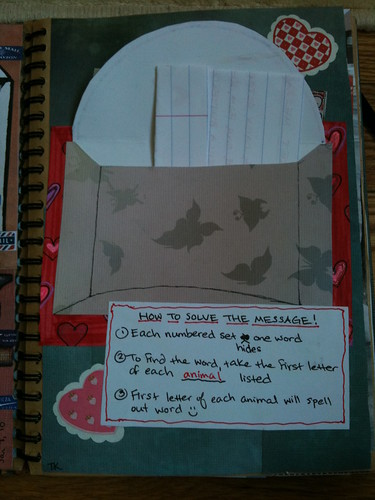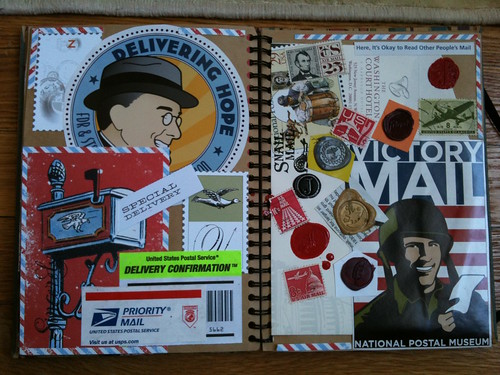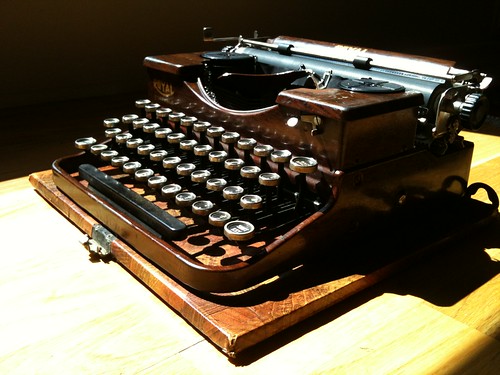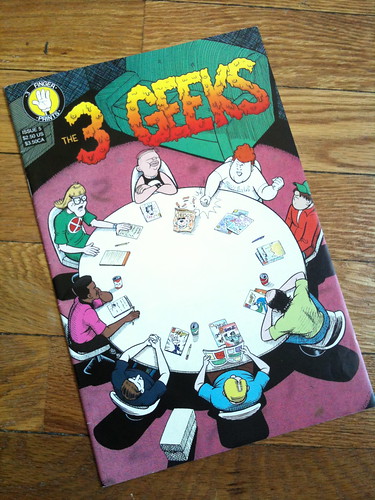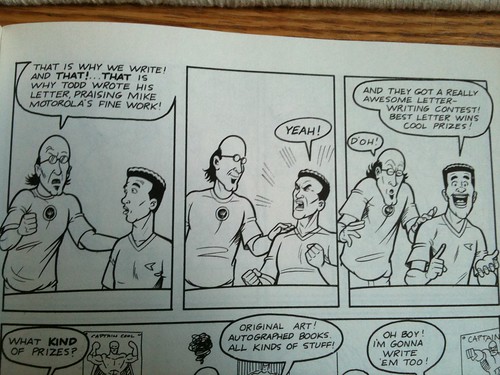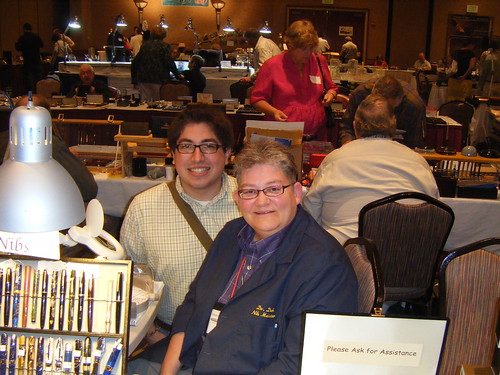There are soooooo many fountain pens out there! And, like many collectors in many other hobbies, pen enthusiasts often choose to focus their collections around a common theme, whether it be a manufacturer, color scheme, material or era. For a couple years now, I have purchased pens without any single thread to tie my collection together [aside from the fact that each pen spoke to me at some point]. I never actually felt much of a need to focus the collection, I figured that as long as I appreciated all of my pieces that it didn't matter if they were a cohesive grouping. That changed when I purchased my first ring top.
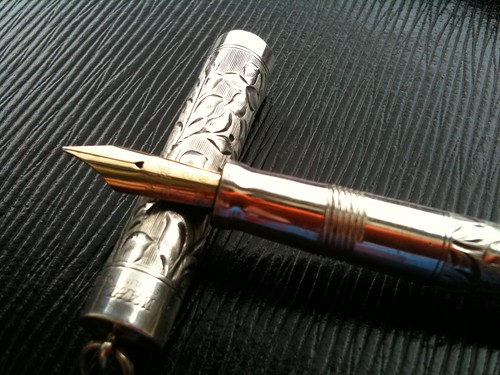
When I first saw this 1920s all metal, sterling silver, hand engraved, lever filling Wahl, I knew that it belonged in my pen case... and that it needed company.
Ring top pens were originally advertised as vest pens for men. They were worn with a short chain that attached to a button hole in the man's vest and were kept in a vest pocket. Later, for reasons not 100% clear, these same pens were advertised to women as ladies' pens, worn on a chain around the neck. Same pens, just different target markets. I've had considerable trouble accurately dating my particular pen, so I'm not sure whether it was advertised as a vest pen or a ladies' pen.
I searched around the internet on multiple occasions, and while I found Wahl advertisements for very similar pens on the Pen Collectors of America website, I'm not totally comfortable saying that the pen I own and the pen advertised are the same.
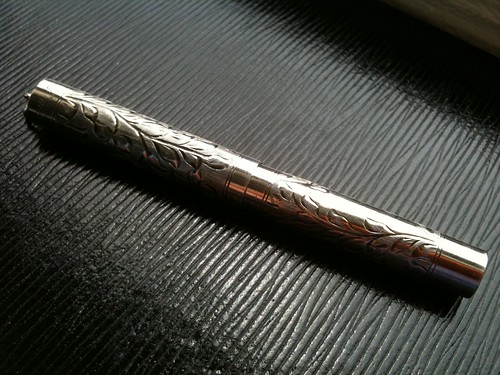
When I went to the Raleigh Pen Show in June I made a special point of asking around to see if anyone could give me information on my little pen. Unfortunately, no one could really give me any specifics beyond general information on Wahl all metal ring tops. I did, however, find a vintage Waterman ring top with a strikingly similar floral pattern. The Waterman vendor, Alan Hirsch, posited that this particular pattern may have just been a popular trend in the 1920s, meaning that the engravers from Wahl and Waterman probably didn't copy the others' design, but that they were probably inspired by a common third party design. To Wahl's benefit, Alan volunteered that my pen was prettier than the Waterman he was selling. I wonder what species of flower inspired the pattern, any ideas?
I thought for sure that my quest to find out more about my pen had ended, when through our personal correspondence, I found out that Julie from Whatever that she, too, had a sterling Wahl ring top. I held my breath, until Julie posted about her pen on her blog, and it turns out that our pens are twins!
Julie found the same Wahl ad that I did, and she's a tad more inclined than I am to believe that our pens are the very same model as the pen advertised in the vintage catalog.
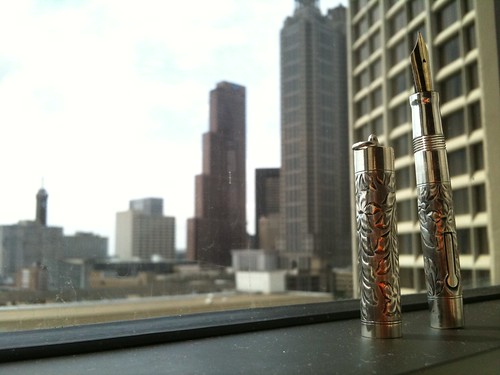
Historical ambiguities aside, this 4.5"-ish writer is one of my favorite pens. The all metal section is fitted with a Wahl No. 2, a very flexible 14k nib. When the pen arrived in my mailbox, the nib was a bit scratchy, even on the smoothest of papers. So, I had nibmeister Deb Kinney smooth my nib at the Raleigh Pen Show for a nominal fee, and it writes brilliantly.
I don't have a chain for this or any of my other ring top pens, yet, but I do plan on wearing them as vest pens in the future. Can you think of any places where I can get a deal on a sterling silver pen chain [or a double albert chain]?
I was so excited to purchase this ring top, and I look forward to acquiring [many?] more!

